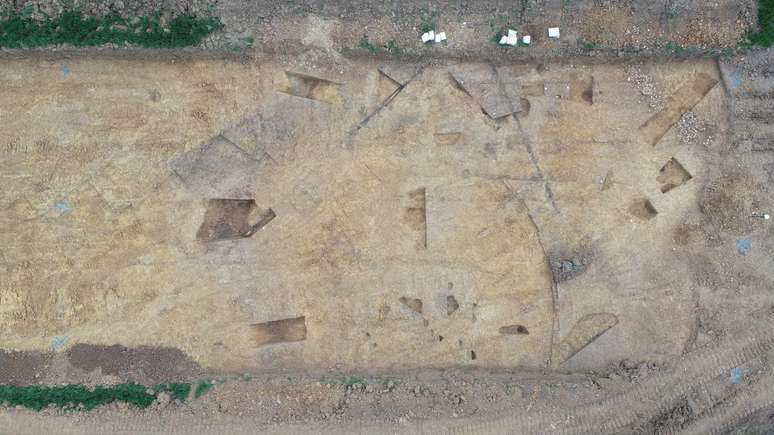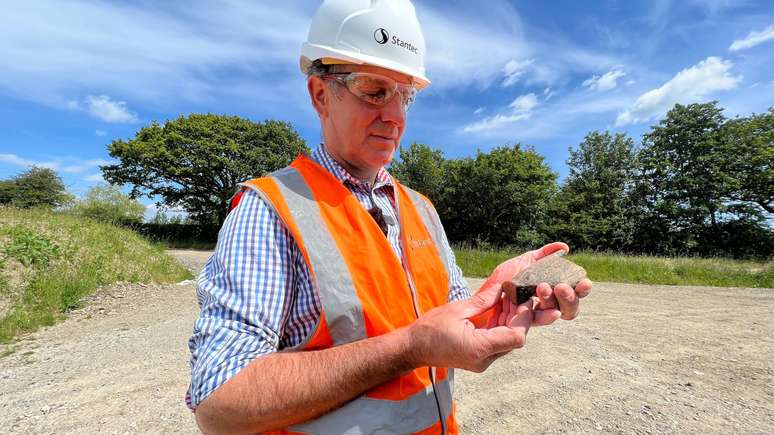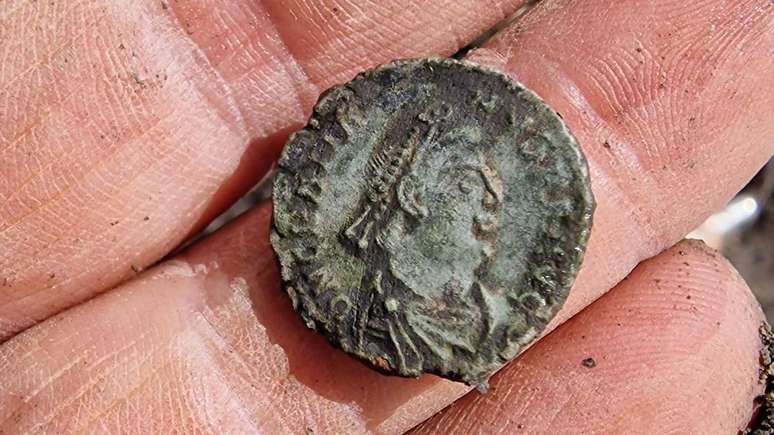Coins and pottery were discovered during excavations in England that revealed settlements dating back more than 3,000 years.
Evidence of settlements dating back 3,000 years has been discovered near a dyke in eastern England.
The artefacts were found by archaeologists who were carrying out excavations ahead of the construction of a 19.5km water main near Abberton Reservoir in Essex.
Artifacts include Roman coins and Iron Age and Bronze Age pottery.
“It’s always fascinating to learn about the history we uncover,” says Daniel Wilson, of supply company Essex and Suffolk Water.

One of the discovered coins is believed to depict the Roman emperor Valentinian I, who reigned from 364 to 375 AD
The Oxford Archeology team also found evidence of farms and settlements, including large rectangular enclosures highlighted by clear harvest marks.
Traces of several structures were also discovered, as well as large deposits of oyster shells and industrial waste.
All findings must be recorded, photographed and tested before work on the pipeline can go ahead.
“Constantly changing landscape”
“Archaeology is the documentation of what has happened over time,” says Tim Haines, an archaeologist at the engineering and design consultancy Stantec.
“The very construction of a water main here will become archeology by its very nature.”
“(These discoveries) are much more interesting to me than things like Stonehenge – they’re about how people actually use the landscape over time,” adds Haine.
He said the findings revealed Essex had “a constantly changing landscape”.
The pottery found, which can be linked to regions of France, indicates that Essex was probably involved in international trade.
“We forget how much trade there was across the North Sea,” observes Haines.
“On the Essex coast there are all these little estuaries, so people were trading up and down the mainland – it’s a very dynamic and quite international landscape.”

Archaeologists began researching the history of the pipeline route more than two years ago, but excavations did not begin until early 2024.
The archaeological work was carried out in collaboration with Essex County Council and Colchester Borough Council.
Essex & Suffolk Water is building the pipeline from Layer de la Haye to Langford, near Maldon.
Once ready, the pipeline will transport 20 million liters of pressurized water every day, which the company says would improve supply resilience for 370,000 customers.
The work is expected to be completed this year.
Wilson said information about the results will be made available to the public.
The expectation is that some artifacts will end up on display in local museums.
Source: Terra
Rose James is a Gossipify movie and series reviewer known for her in-depth analysis and unique perspective on the latest releases. With a background in film studies, she provides engaging and informative reviews, and keeps readers up to date with industry trends and emerging talents.







